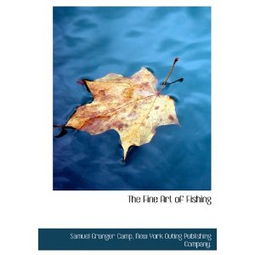Content:
Lure fishing, also known as spin fishing, has gained immense popularity among anglers worldwide for its thrilling experience and the challenge it presents. Whether you're a seasoned pro or a beginner, mastering the art of lure fishing can significantly enhance your fishing skills and increase your chances of catching more fish. In this article, we will delve into the essential techniques and tips that will help you become a proficient lure fisherman.
Understanding Lure Fishing
Before we dive into the techniques, it's crucial to understand what lure fishing is. Lure fishing involves using artificial lures that mimic the movement and appearance of real fish, such as minnows, shad, or baitfish. These lures are designed to attract fish by triggering their natural feeding instincts.
Choosing the Right Lure
The first step in successful lure fishing is selecting the right lure for the species you're targeting and the conditions you're fishing in. Here are some factors to consider when choosing a lure:
Species: Different species of fish have varying preferences for lure types. For instance, bass often prefer crankbaits or spinnerbaits, while trout might be more attracted to a fly or a soft plastic worm.
Water Conditions: The clarity of the water, depth, and structure of the water body will influence your choice of lure. In clear water, you may need a more subtle lure, while in murky water, a more vibrant and noisy lure might be more effective.
Season: Fish behavior changes with the seasons, so your lure choice should adapt accordingly. In spring, fish might be more active and attracted to brighter lures, whereas in winter, they may be more conservative and prefer quieter presentations.

Basic Techniques
Once you've chosen the right lure, here are some basic techniques to help you fish it effectively:
Cast: Learn the proper casting technique for your chosen lure. For example, with a spinnerbait, you'll want to cast it out and then retrieve it with a steady, erratic motion. With a crankbait, you'll want to cast it out and then twitch it with short, sharp movements.
Retrieve: The retrieve is where most of the action happens. The speed and rhythm of your retrieve will depend on the type of lure and the species of fish you're targeting. For example, a slower retrieve might be more effective for trout, while a faster retrieve might attract bass.
Rigging: Proper rigging is essential for ensuring that your lure performs as intended. For instance, a spinnerbait should be rigged with the correct wire and blades to create the desired action.
Timing: Timing is crucial when it comes to lure fishing. You need to be patient and wait for the right moment to set the hook. Look for signs of interest, such as a fish following the lure or striking at it.
Advanced Techniques
As you become more comfortable with the basics, you can start experimenting with more advanced techniques:
Jigging: Jigging involves bouncing a lure along the bottom or near structure. This technique is effective for targeting fish that are holding close to the bottom.
Trolling: Trolling is a method of fishing where you move the boat and the lure through the water. This can be an effective way to cover a large area and find fish.
Surface Fishing: Some lures are designed to be fished on the surface, such as topwater poppers or frogs. This technique can be particularly exciting as you often see the fish strike.
Safety and Etiquette
Always prioritize safety and follow proper fishing etiquette:
Safety Gear: Wear a life jacket and other safety gear, especially when fishing from a boat.
Respect the Environment: Be mindful of your impact on the environment. Dispose of trash properly and avoid disturbing the natural habitat.
Catch and Release: If you're fishing in a catch-and-release area, handle fish with care to ensure their survival.
Conclusion
Lure fishing is a dynamic and exciting form of fishing that requires practice and patience. By understanding the basics, choosing the right lure, and mastering the techniques, you'll be well on your way to becoming a proficient lure fisherman. Remember to enjoy the process and respect the sport, and you'll find that the thrill of the catch is just the beginning of your fishing journey.












